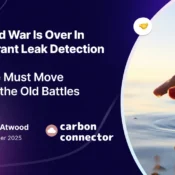
How Will the ISO–GHG Protocol Alignment Transform Refrigerant Reporting?
Table of Contents
ToggleWhy Is Leak Detection the Key to Meeting Scope 1 Compliance Targets?
For years, companies, regulators, and investors have struggled with a simple but stubborn problem: How do we measure, compare, and verify greenhouse gas emissions in a consistent way?
Unlike financial accounting, where every dollar is subject to GAAP or IFRS, carbon accounting has been split between two frameworks:
GHG Protocol
This gave the world the language of Scopes 1, 2, and 3, but allowed flexibility in how data was gathered and reported.
ISO 14064
This gave auditors the rigor and verification tools to test inventories, but was often used behind the scenes rather than in public disclosures.
This split worked, for a while. It allowed companies to disclose climate impacts without being locked into a single verification system.
But it also created inconsistencies, especially around fugitive refrigerant emissions, which make up the majority of direct (Scope 1) emissions for retailers, grocers, and food distributors. Air conditioning systems are another major source of refrigerant leaks and Scope 1 emissions, further complicating accurate reporting.
When refrigerants leak from HVAC and refrigeration systems, they represent a significant source of direct greenhouse gas emissions, carrying substantial environmental, financial, and regulatory implications.
Investors noticed the gaps. Regulators grew frustrated. Companies reported under both frameworks, creating duplication and confusion.
And for refrigerants, the leakiest and most operationally sensitive greenhouse gas source, the inconsistencies were most glaring. Inconsistent reporting increases financial risks for companies and investors, making it harder to assess exposure and make informed decisions.
Against this backdrop, the September 2025 joint press release from ISO and the GHG Protocol landed like a turning point.
The two standard-setters announced a strategic partnership to harmonize their frameworks into one global standard.
For the first time, companies would not only speak the same language but also follow the same rules. Accurately calculating emissions will be essential for regulatory compliance and transparent reporting.
This is not an abstract policy change. For retailers, non-listed grocers, and regional chains from California to New York, this alignment means refrigerant emissions will be treated with the same precision as a balance sheet.
Carbon emissions will be a key metric that is more accurately reported. Leak detection systems, asset registers, and mass-balance records are no longer optional best practices; they are becoming the compliance backbone that will determine whether companies hit their Scope 1 targets.
These tools help track emissions produced and associated emissions from refrigerant leaks, supporting better monitoring and management.
The new standard will require more precise refrigerant reporting, factoring in global warming potential to ensure environmental impact is properly assessed.
The alignment will also support reducing emissions through better data and management, helping companies meet sustainability and regulatory goals.
🚨 From automated refrigerant tracking to compliance reporting: we simplify your path to Scope 1 accuracy.
What Has Shaped U.S. ISO Engagement and Why It Matters Now?
The Global Map of ISO Engagement
The US market has always lagged Asian Markets in ISO engagement. For instance, more than 300,000 companies in China are ISO 14001 compliant, whereas here in the US, only about 4,800 participate. The core assumption is best explained by the different approaches to environmental compliance.
The US relies heavily on “hard” federal regulations (e.g., EPA) and mandatory enforcement, which reduces the perceived necessity of a voluntary standard.
In contrast, Asian companies, particularly in export-driven manufacturing, rely more on “private governance,” where ISO 14001 acts as a de facto mandatory “ticket to trade” required by multinational corporate buyers and fills enforcement gaps in domestic regulation.
- As of 2025, ISO includes a network of 173 national members, each represented by a single standards body per country.
Sources: ISO.org, ISO - This structure means that each country has one official voice in ISO’s standard-setting process, which includes voting rights and influence over technical committee outcomes.
- The United States is represented by the American National Standards Institute (ANSI), a private-sector body, unlike most ISO national members in Europe and Asia, where standards bodies are often government-supported.
Source: NIST report, NIST
Regional Trends in ISO Engagement
- In Europe and China, national ISO bodies like AFNOR (France), BSI (UK), DIN (Germany), and SAC (China) are deeply embedded in public policy, trade standards, and regulatory alignment. These regions emphasize ISO compliance as a mark of quality.
- In contrast, the U.S. historically leaned more on the GHG Protocol for corporate transparency rather than ISO standards, meaning ISO 14064 was less visible in public-facing GHG inventories, especially for Scope 1 categories like refrigerants.
- This lower profile contributed to fragmented reporting on refrigerants (often left out of financial-grade disclosures) even though they make up a significant portion of Scope 1 emissions in retail.
The US is now reaching a pivotal moment where this historical divergence in governance models (the domestic reliance on “hard” federal law versus the global embrace of “private” ISO standards) may prove unsustainable.
This pressure is amplified by the current volatility in the domestic regulatory environment. Should federal mandates continue to diminish, the resulting compliance and transparency vacuum may effectively compel US corporations toward the private governance model long employed by their Asian counterparts.
To navigate this transition successfully, American industry might benefit from re-evaluating its long-standing cultural preference for proprietary, domestic compliance systems.
Strategically increasing engagement with international standards, such as the continually evolving ISO 14001 and its related GHG standards, would allow the US to secure future finance and market access globally.
Ultimately, the question for US leadership is whether to remain vulnerable to global market pressure or to proactively seize the opportunity to influence the international standards that will define the future of global commerce and sustainability credibility.
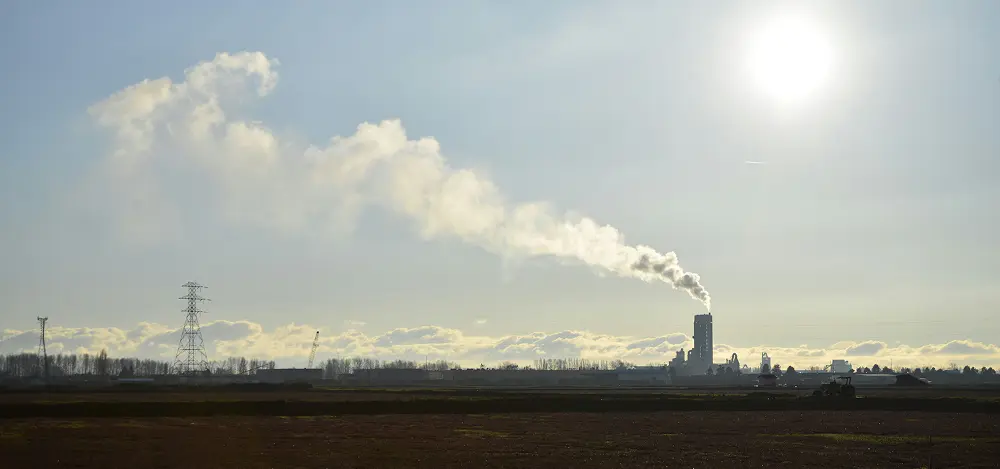
Regulatory Framework: The Landscape Shaping Refrigerant Reporting
The regulatory environment for refrigerant reporting is undergoing a significant transformation, driven by a heightened focus on transparency and accuracy in greenhouse gas (GHG) emissions disclosures.
Regulatory agencies, most notably the Environmental Protection Agency (EPA), are tightening requirements to ensure that companies can no longer obscure refrigerant emissions within aggregated totals.
This shift is particularly impactful for retailers, where refrigeration systems are a primary source of fugitive emissions and represent a substantial portion of Scope 1 emissions.
The EPA’s Refrigerant Management Program now mandates that businesses systematically track and report refrigerant emissions, making robust refrigerant management strategies essential.
This includes not only monitoring and documenting leaks but also implementing preventative measures to minimize emissions and reduce the overall carbon footprint.
As a result, companies must adopt more granular and transparent reporting practices, ensuring that every kilogram of refrigerant released is accounted for and reported as part of their Scope 1 emissions.
🧮 Use our free calculator to quantify refrigerant leaks and understand your Scope 1 impact under EPA and GHG reporting standards.
The dominance of refrigerants in Scope 1 emissions for retailers is a direct consequence of the extensive use of refrigeration systems in stores. These systems, if not properly maintained, can be prone to leaks, leading to significant fugitive emissions of potent greenhouse gases.
When refrigerants leak, they not only represent a major source of direct greenhouse gas emissions but also carry scientific, financial, and regulatory implications, making their management a critical focus for compliance and sustainability.
With regulatory scrutiny intensifying, effective refrigerant management is no longer optional; it is a critical component of compliance and a key driver in reducing a company’s environmental impact.
Why This Matters for Refrigerant Reporting Today?
This background helps explain why the ISO–GHG Protocol alignment in September 2025 is more than just technical housekeeping; it’s a realignment of standard-setting politics and practices.
Historically, the U.S.’s lower ISO engagement meant less regulatory pressure to institute rigorous refrigerant accounting. Now, harmonization forces all geographies (from California to New York and beyond) to use the same audit-ready refrigerant disclosure framework.
As a result:
Leak detection systems and asset-level tracking become the operational backbone of reporting; no longer optional, but essential.
Standardized reporting will also extend to categories like process emissions and emissions from production processes, ensuring a more comprehensive approach to greenhouse gas accounting.
Refrigerant data becomes comparable across countries, bridging the U.S.’s former reliance on GHGP flexibility with global ISO rigor.
Harmonization will also improve the comparability of value chain emissions across geographies, enabling organizations to better assess their full environmental impact.
Non-listed grocers and regional chains in the U.S., especially in ISO-savvy states like California, must adopt ISO-aligned policies to satisfy investor and regulatory expectations.
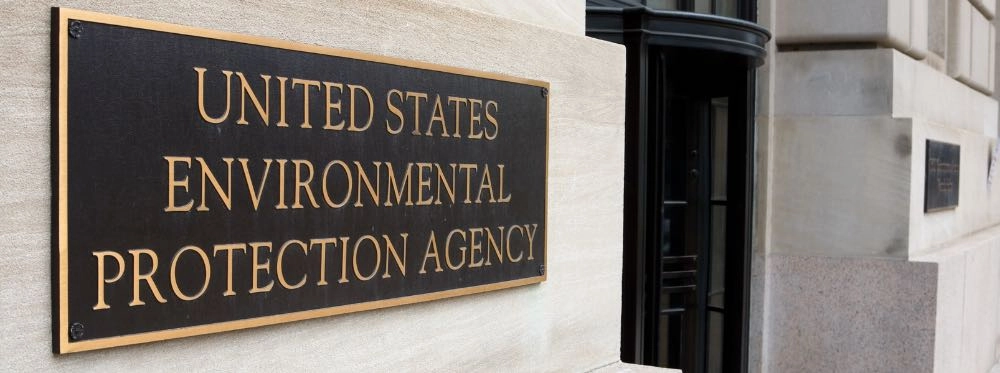
Introduction to Emissions Management
Emissions management is at the heart of modern environmental protection and sustainability strategies, as organizations worldwide strive to reduce their greenhouse gas emissions (GHG emissions) and limit their impact on climate change.
Measuring GHG emissions is critical for effective climate risk assessment and compliance, ensuring organizations can accurately quantify and report their greenhouse gas output. The Environmental
Protection Agency (EPA) plays a pivotal role in setting regulatory standards and monitoring compliance, particularly for industries with significant fugitive emissions, such as those using refrigeration systems or engaging in complex industrial processes.
Effective emissions management begins with tracking emissions data across all operations, identifying both direct emissions (those released from owned or controlled sources) and indirect emissions, which result from activities like purchased electricity or outsourced processes.
Fugitive emissions, such as those from refrigerant leaks, are a critical focus area, as they can be challenging to detect and quantify without robust leak detection systems in place.
To accurately measure and manage greenhouse gases emitted, companies rely on emissions factors, which provide standardized values for the amount of greenhouse gas produced per unit of fuel consumption or energy use. Robust emissions management also requires uncertainty assessment to ensure the reliability and credibility of reported data, as emphasized in ISO 14064.
By leveraging these tools and implementing advanced leak detection technologies, organizations can pinpoint inefficiencies, reduce unnecessary losses, and make informed decisions to lower their carbon footprint.
Ultimately, integrating energy-efficient equipment and best practices into daily operations not only supports regulatory compliance but also positions companies as leaders in the fight against climate change.
These practices help organizations reduce emissions and achieve their sustainability goals.
🚨 See how smart monitoring and analytics can help you cut emissions, save energy, and stay compliant.
What Is the ISO–GHG Protocol Alignment?
In September 2025, the International Organization for Standardization (ISO) and the GHG Protocol announced a strategic partnership to harmonize their greenhouse gas accounting frameworks.
The GHG Protocol was originally developed in 1998 through a partnership between the World Business Council for Sustainable Development and the World Resources Institute, establishing global standards for measuring and reporting corporate greenhouse gas emissions.
For decades, companies operated in two worlds:
GHG Protocol = the language.
Since 2001, the GHG Protocol has been the world’s most widely used framework for corporate greenhouse gas reporting, defining Scope 1 (direct), Scope 2 (indirect energy), and Scope 3 (value chain). Its accessibility made it universal, but its flexibility allowed companies to choose their depth; using boundary options (equity share vs. control), aggregating refrigerants into totals, or delaying details into CDP filings.
ISO 14064 = the rigor.
Since 2006, ISO 14064 (revised in 2018) has set principles for inventory design, uncertainty assessment, evidence trails, and verification. It is built for audit-ready assurance. Adoption was patchy, and many companies relied on GHGP for communication while only selectively applying ISO for certification.
The 2025 alignment merges these into a dual-logo, harmonized framework: one shared language and one shared set of rules.
Where Were ISO and GHG Protocol Five Years Ago?
Five years ago (2019–2020):
- GHG Protocol dominated disclosures, but refrigerant data were inconsistent. One retailer might report leaks explicitly; another could bury them under “fugitive” without a breakout.
- ISO 14064: 2018 required uncertainty assessment and documentation, but it wasn’t widely applied in grocery retail.
Result
Investors and regulators could not compare refrigerant emissions reliably across companies, even though refrigerants were the largest single category of Scope 1 emissions in the sector.
The lack of a standardized emissions inventory made it difficult to quantify and track emissions consistently, hindering effective comparison and alignment with frameworks like the GHG Protocol and GRI.
🚨 Ensure audit-ready GHG disclosures. Standardize your emissions reporting.
How Will Harmonization Change Refrigerant Emissions Reporting?
Under the alignment:
Boundaries converge
Companies must consolidate based on operational control. No more leaving refrigerant-heavy facilities off the balance sheet. Other sources of Scope 1 emissions, such as natural gas combustion in stationary equipment and emissions from oil and gas operations, are now subject to the same rigorous standards.
Classification is standardized
Fugitive refrigerants are always Scope 1/direct emissions. Other greenhouse gases and indirect GHG emissions, such as those resulting from purchasing electricity (Scope 2), will also be more clearly categorized and reported under the new framework.
Assurance becomes expected
Scope 1 disclosures must stand on ISO-grade verification, including service records, recovery weights, and mass-balance reconciliations. This alignment will also standardize and strengthen refrigerant emissions reporting for regulatory and audit purposes.
Will companies still be able to hide refrigerant emissions in aggregated totals?
No. With the new regulatory framework and the alignment of ISO and the GHG Protocol, companies are required to report refrigerant emissions as a distinct, auditable line item within their Scope 1 emissions. Aggregating these emissions into broader categories is no longer permitted, ensuring full transparency and accountability.
Will companies still be able to hide refrigerant emissions in aggregated totals?
No. Harmonization makes refrigerant emissions a discrete Scope 1 line item backed by auditable evidence.
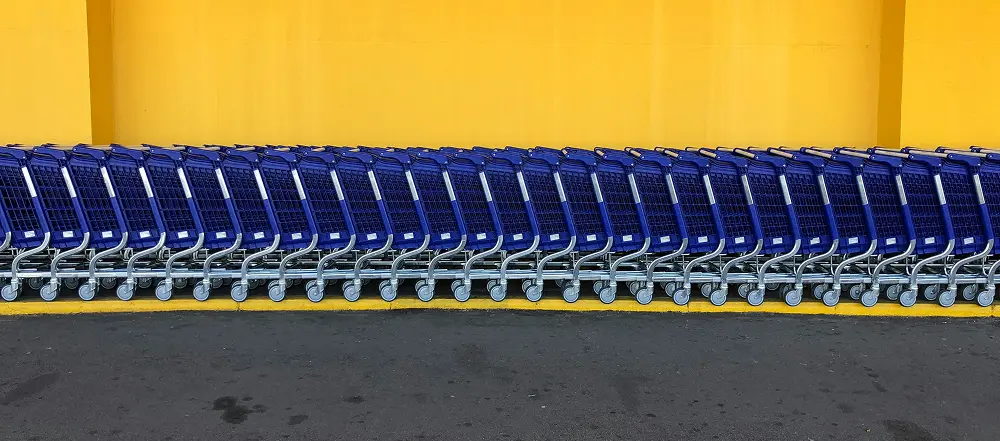
What Do the Last Five Years of Retail Data Show?
Target (2023)
~818,148 tCO₂e Scope 1, with refrigerants at 468,075 tCO₂e (57%), up from 254,174 tCO₂e in 2018.
Kroger (2023)
2,288,734 tCO₂e Scope 1, with refrigerants at 1,365,158 tCO₂e (60%), compared to 1,673,928 tCO₂e in 2020.
Walmart (2023)
~3.8M tCO₂e Scope 1, with refrigerants estimated at ~55% through CDP and ESG narratives, though not published as a stand-alone figure.
These tCO₂e values are reported in metric tons, which is the standard unit for quantifying greenhouse gas emissions in corporate reporting.
📌 Despite differences in scale, all three converge: refrigerants represent 55–60% of Scope 1 emissions.
Why are refrigerants the dominant share of Scope 1 emissions in retailers?
Refrigerants are the dominant share of Scope 1 emissions in retailers because refrigeration systems are widespread and essential for store operations, especially in grocery and food distribution.
These systems often use high-global-warming-potential gases, and even small leaks can result in significant fugitive emissions.
Without rigorous refrigerant management, these emissions quickly surpass those from other direct sources, making them the primary focus for regulatory compliance and carbon footprint reduction.
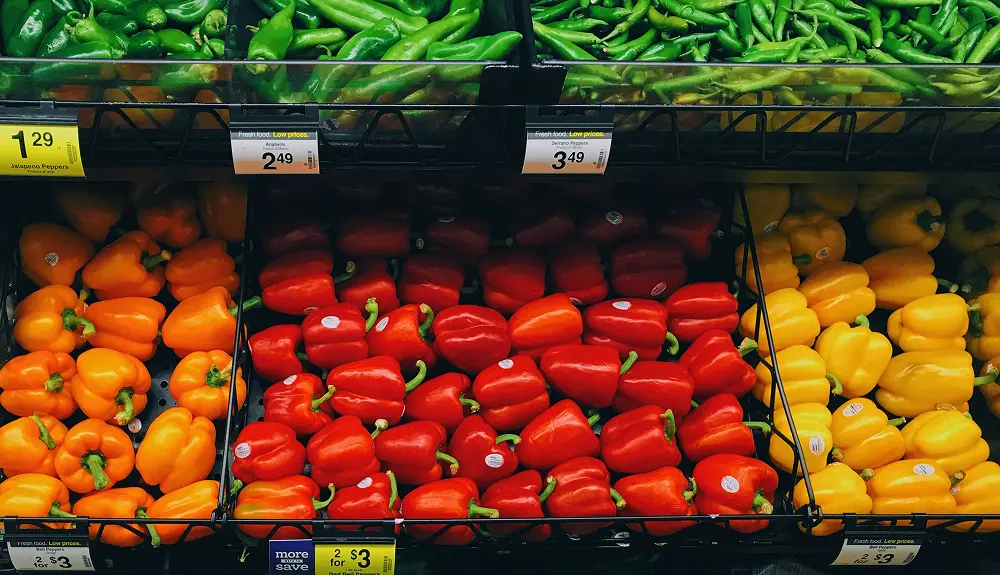
Why are refrigerants the dominant share of Scope 1 emissions in retailers?
Refrigeration systems are extensive, complex, and prone to leaks. The widespread use of cooling systems in grocery and retail operations is a key driver of refrigerant use and emissions.
In grocery and retail, fugitive refrigerant emissions often outweigh fleets and stationary combustion combined.
🚨 Invest in advanced detection technologies to identify and mitigate emissions quickly, lowering environmental impact and operational costs.
Emissions Reporting and Management: Best Practices and New Requirements
To effectively reduce greenhouse gas emissions and meet regulatory requirements, companies must adopt best practices in emissions reporting and management.
This begins with the implementation of comprehensive emissions tracking systems that capture both direct emissions (Scope 1) from owned or controlled sources and indirect emissions (Scope 2 and 3) from purchased electricity and value chain activities.
Accurate tracking enables organizations to build a complete picture of their carbon footprint and identify key areas for improvement.
Regular leak detection and repair are essential for minimizing fugitive emissions, particularly from refrigeration systems and other equipment prone to leaks.
By investing in advanced leak detection technologies and conducting routine inspections, companies can quickly identify and address sources of greenhouse gas emissions, reducing both environmental impact and operational costs.
Optimizing energy efficiency across operations is another critical best practice. Upgrading to energy-efficient equipment, improving building insulation, and streamlining processes can significantly lower energy consumption and associated emissions.
These measures not only support compliance with the GHG Protocol and other regulatory requirements but also enhance operational efficiency and resilience in the face of climate change.
The GHG Protocol provides a robust framework for emissions measurement and reporting, requiring companies to account for all relevant sources of greenhouse gas emissions.
By adhering to these standards and integrating best practices into daily operations, organizations can ensure accurate, transparent reporting, reduce their overall emissions, and position themselves as leaders in sustainability.
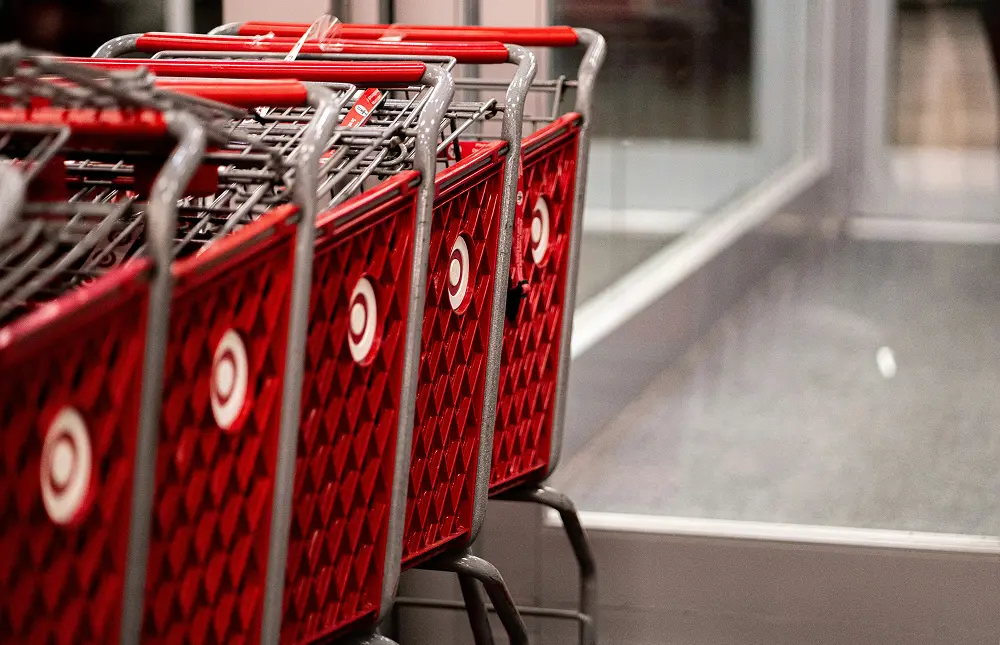
How Will the ISO–GHG Protocol Alignment Affect Grocers at Global, National, and Regional Levels?
How will the ISO–GHG Protocol alignment affect smaller and independent grocers?
The impact of ISO–GHG Protocol harmonization will extend beyond global retail giants like Walmart, Kroger, and Target. Independent grocers, regional supermarket chains, and food distributors across the United States will also be required to adopt more rigorous refrigerant accounting practices.
Global context
In Europe (with AFNOR in France, DIN in Germany, BSI in the UK) and China (through SAC, the Standardization Administration of China), ISO standards are deeply integrated into regulatory systems.
This means European and Chinese grocers are already accustomed to ISO-aligned reporting on energy use and refrigerants.
By contrast, the U.S. has historically relied on the GHG Protocol, giving grocers more flexibility but also less rigor in their disclosures. The new alignment closes that gap, bringing the U.S. into step with Europe and Asia.
National and regional context (U.S.)
Grocers in California (CARB refrigerant rules, Title 24), New York (DEC Part 494), Washington (WAC 173-443), New Jersey (DEP refrigerant programs), and Colorado (GHG reporting requirements) are already subject to state-level refrigerant regulation.
Harmonization between ISO and the GHG Protocol gives these states a common global benchmark to test refrigerant emissions data. It also removes ambiguity for companies operating across multiple jurisdictions.
Operational impact
Whether a store is a single-location independent grocer in upstate New York or a regional supermarket chain in California, the expectations are the same:
- Maintain asset registers for every refrigerant-bearing system.
- Implement leak detection systems that provide timestamped evidence of fugitive emissions.
- Disclose verifiable Scope 1 refrigerant data that meets ISO-grade assurance standards.
📌 The ISO–GHG Protocol alignment means that all grocers (global retailers, regional chains, and independents alike) will be held to the same standard.
Refrigerants, already the majority of Scope 1 emissions in grocery, will no longer be a reporting afterthought.
They will become the centerpiece of compliance, driving adoption of leak detection technology and asset-level tracking across the grocery sector.
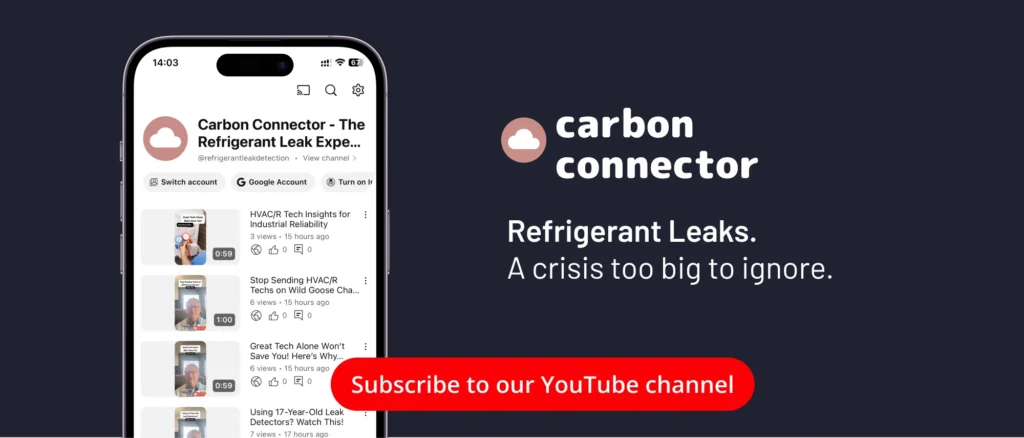
Industry Developments and Trends
The landscape of managing greenhouse gas emissions is rapidly evolving, with industries across the board intensifying their focus on Scope 1 emissions and the reduction of fugitive emissions.
One of the most notable developments is the widespread adoption of advanced leak detection technologies. These systems are now essential tools for identifying and mitigating refrigerant leaks and other direct emissions from refrigeration systems and industrial processes.
The Environmental Protection Agency (EPA) has played a pivotal role in encouraging the deployment of these technologies, recognizing their impact on reducing greenhouse gas emissions and improving overall energy efficiency.
Accurate carbon accounting has become a cornerstone of regulatory compliance and corporate sustainability.
Companies are increasingly required to track and report their greenhouse gas emissions data, including direct emissions and carbon dioxide equivalent figures, to meet both regulatory requirements and stakeholder expectations.
The GHG Protocol remains the gold standard for measuring and managing greenhouse gas emissions, with organizations relying on emissions factors and emission factors to ensure precise calculations and transparent reporting.
In the oil and gas industry, there is a marked shift toward reducing methane emissions intensity.
Companies are investing in strategies to detect and reduce methane leaks, recognizing the significant climate impact of methane as a greenhouse gas.
This sector is also exploring the integration of renewable energy sources, such as solar and wind, to power operations and reduce reliance on fossil fuels for electricity generation and other industrial processes.
Operational efficiency is another key trend shaping the industry. Businesses are upgrading to energy-efficient equipment and optimizing cooling systems to lower energy consumption and reduce energy bills.
These improvements not only help minimize the carbon footprint but also drive cost savings and enhance competitiveness.
The gas industry and other sectors are leveraging emerging technologies to streamline operations and further reduce their environmental impact.
Regulatory bodies and policy organizations continue to drive progress. The California Air Resources Board has set ambitious standards for greenhouse gas emissions, influencing climate policy nationwide.
Meanwhile, the World Resources Institute provides guidance and resources to help companies manage Scope 1 emissions and implement best practices for reducing greenhouse gases emitted throughout the value chain.
As the transition to a low-carbon economy accelerates, the importance of managing greenhouse gas emissions (particularly Scope 1 and fugitive emissions) will only increase. Companies that invest in leak detection, accurate carbon accounting, and energy-efficient solutions are positioning themselves for long-term success in a world where environmental impact and regulatory compliance are central to business strategy.

Sustainability and Carbon Footprint
Sustainability is fundamentally about minimizing the environmental impact of business operations while promoting long-term resource efficiency and resilience.
Central to this goal is the management of an organization’s carbon footprint; the total volume of greenhouse gases, measured in carbon dioxide equivalent (CO2e), released as a result of activities ranging from fossil fuel combustion to industrial processes, gas operations, and refrigerant use.
The Greenhouse Gas Protocol (GHG Protocol) serves as the global standard for measuring, managing, and reporting GHG emissions.
It distinguishes between scope 1 emissions, which are direct emissions from sources like stationary combustion and company vehicles, and scope 2 emissions, which are indirect emissions associated with purchased electricity and other forms of energy consumption.
By following the GHG Protocol, companies can ensure their emissions data is accurate, comparable, and aligned with regulatory compliance requirements.
Quantifying the emissions produced from all relevant sources( including combustion, industrial processes, and leaks) is essential for effective management and reporting.
Adopting sustainable practices (such as improving energy efficiency, transitioning to renewable energy sources, and enhancing refrigerant management) enables organizations to reduce their overall GHG emissions and environmental impact.
These efforts also help decrease associated emissions from energy use and refrigerant management. Accurate carbon accounting and transparent emissions reporting are essential for tracking progress, meeting regulatory obligations, and identifying opportunities for further improvement.
As businesses continue to prioritize sustainability, these efforts not only help mitigate climate change but also drive operational efficiency and long-term value creation.
🚨 See how smart monitoring and analytics can help you cut emissions, save energy, and stay compliant.
What Does the Alignment of the GHG Protocol and ISO Mean Going Forward for Refrigerant Policy and Compliance?
National level
EPA’s AIM Act and Section 608 rules will intersect with ISO–GHGP harmonization, making leak records, recovery weights, and audits part of federal compliance. Managing greenhouse gas emissions will require structured processes and adherence to harmonized standards such as the GHG Protocol.
State level
California, New York, Washington, New Jersey, and Colorado are likely to adopt harmonized frameworks, raising compliance stakes for all grocers.
Industry level
Refrigerants shift from being underreported fugitive emissions to the headline category of Scope 1, tested for comparability, auditability, and accuracy.
How will investors and regulators use these new standards?
They will benchmark refrigerant emissions across peers with apples-to-apples comparability, increasing pressure on laggards to improve leak control.
Companies will need to monitor and track emissions to ensure accurate benchmarking and compliance.
How to Close the Loop on Scope 1 Emissions?
How Does a Leak Detection Company Become a Driver of Integrity, Compliance, and Results?
This is the question we hear most often, and it’s the right one to ask.
At first glance, leak detection might sound like a maintenance function, but in today’s regulatory landscape, it has become the cornerstone of verifiable Scope 1 reporting.
The answer lies in how we built Leak Detection as a Service (LDaaS) with AKO and Carbon Connector.
→ Read More About “Refrigerant Leak Detection as a Service“
For too long, refrigerant reporting in grocery, retail, and food distribution has been undermined by phantom numbers: estimates, assumptions, and misallocations that inflated Scope 1 disclosures without proof.
Traditional leak detection programs, while well-intentioned, failed to provide the audit-ready integrity that regulators, auditors, and investors now demand, and conventional leak detection hardware was trigger-happy and over-alerted teams, sending maintenance costs skyrocketing and stressing the maintenance teams.
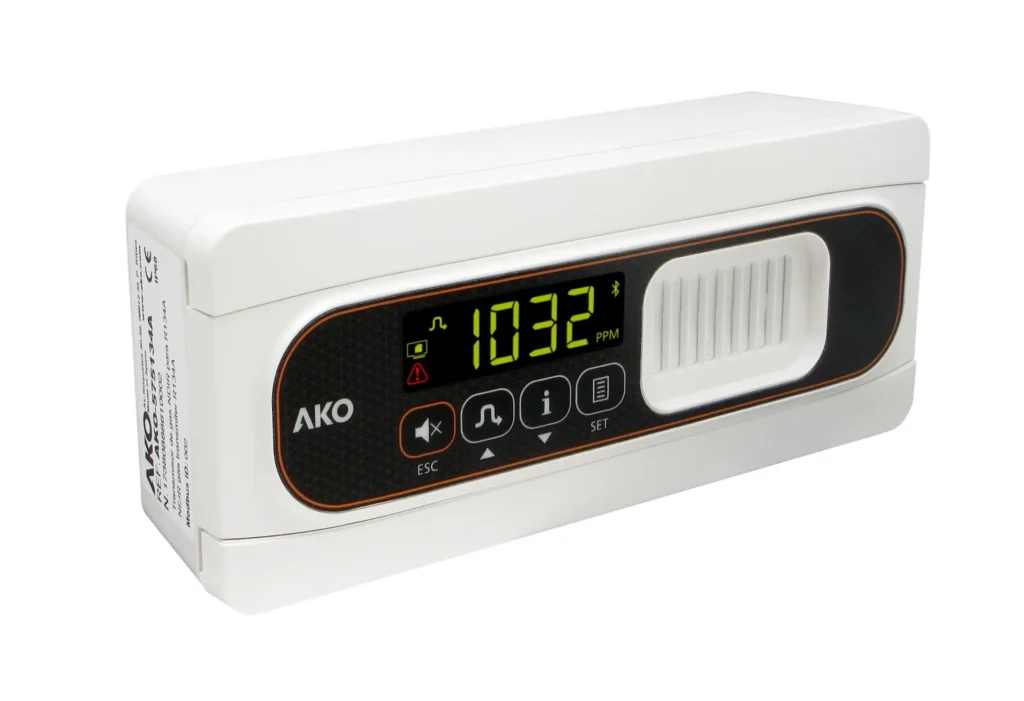
That’s why our LDaaS is different. It is designed to close the loop on Scope 1 refrigerant emissions. Unlike generic sensors or one-off maintenance contracts, our LDaaS combines:
- AKO’s advanced detectors deliver real-time, high-sensitivity precision and capture leaks at the earliest possible stage.
- Carbon Connector’s compliance intelligence transforms every detection event into a verified refrigerant ledger entry that auditors can test with the same rigor as financial accounts.
📌 This integrated model means every refrigerant event is a fact, not an estimate: eliminating phantom emissions, reducing misreporting, and cutting the cost of audits.
Why Our LDaaS Delivers More Than Conventional Leak Detection?
In grocery retail, food distribution, and cold storage, refrigerants account for 55–60% of total Scope 1 emissions. That means a company’s compliance trajectory rises or falls on leak management. Our LDaaS was built specifically for this reality:
Asset Identification
Every refrigerant-bearing unit (from supermarket racks to walk-in coolers) is assigned a unique ID, charge size, and GWP factor. Nothing is left untracked.
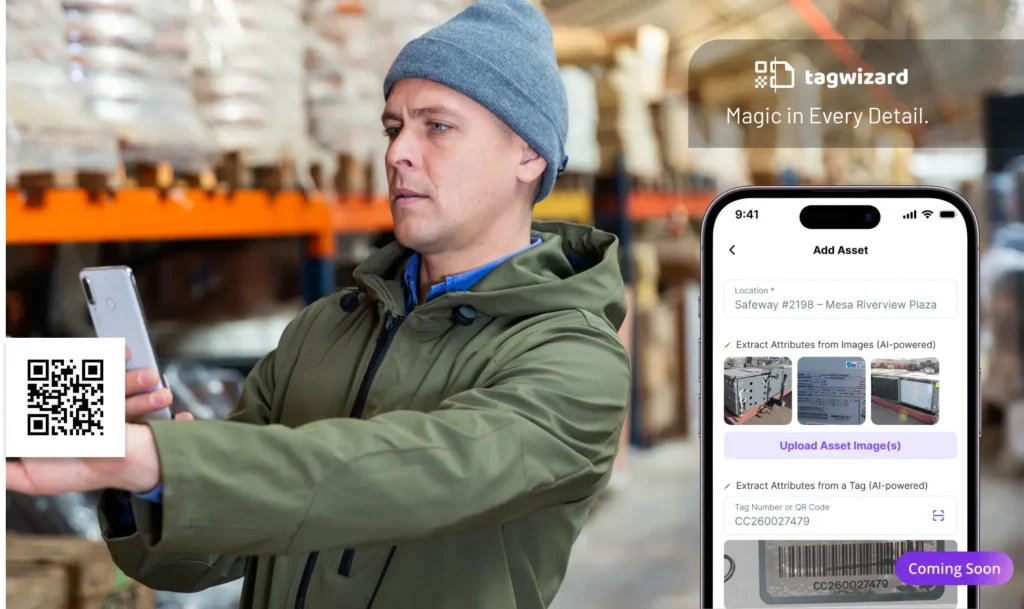
Mass-Balance Integrity
Purchases, recoveries, and charges reconcile against live leak logs, producing a closed-loop refrigerant ledger that meets ISO verification standards.
Managerial Control
Real-time dashboards show whether facilities, regions, or entire enterprises are on track or off track for Scope 1 targets: the same way finance teams track budgets.
Audit Trail
Every leak is timestamped, verified, and tied to a specific asset. Regulators and auditors can validate refrigerant data with the same rigor as financial statements.
📌 This is not just leak detection. It is full-cycle compliance assurance, designed to meet the highest regulatory and investor expectations.
The September 2025 ISO–GHGP alignment changes everything. Fugitive refrigerants can no longer be hidden in aggregated categories or rounded away.
They must be reported as discrete, verifiable Scope 1 emissions supported by audit-ready evidence.
Our LDaaS was built for exactly this moment. By uniting precision detection with compliance intelligence, we give companies (from national retailers like Walmart, Kroger, and Target to independent grocers and regional chains in California, New York, Washington, New Jersey, and Colorado) the ability to:
- Eliminate phantom numbers and misreporting.
- Build integrity directly into their refrigerant ledger.
- Cut verification time and audit costs.
- Meet both federal AIM Act requirements and state-level rules, such as:
- CARB refrigerant programs in California,
- NY DEC Part 494,
- Washington WAC 173-443,
- New Jersey DEP,
- Colorado GHG reporting mandates.
ISO is the rigor. GHG Protocol is the language.
For years, companies could choose depth, skip refrigerant disclosures, or push them out to CDP. With the 2025 alignment, refrigerants (already 55–60% of Scope 1 for grocers like Target, Kroger, Walmart, and regional peers) become the auditable centerpiece of emissions compliance.
Refrigerants Are to Scope 1 What Energy Is to Scope 2: So How Do You Measure Up?
For years, companies could decide how deeply to disclose refrigerant data: aggregating, estimating, or pushing details into CDP. That era is over.
With the 2025 ISO–GHGP alignment, refrigerants, which already make up 55–60% of Scope 1 emissions for grocers like Target, Kroger, Walmart, and their regional peers, now sit at the center of compliance.
This shift makes refrigerants to Scope 1 what purchased energy has long been to Scope 2: the anchor metric, the unavoidable number, the proof point investors and regulators will use to gauge integrity. If you can’t account for refrigerants with precision, your Scope 1 story won’t stand.
That’s why leak detectors and asset registers are no longer optional tools: they are the balance sheet of emissions. They keep the refrigerant ledger accurate, give managers real-time visibility into progress against targets, and provide the audit trail regulators and investors demand.
🚨 Track, verify, comply. Make refrigerant reporting audit-ready.
So the question isn’t whether refrigerants matter: they do.
The question is: how do you measure up?
→ Read More About “Refrigerant Leak Detection as a Service“

